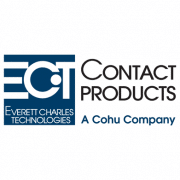Choosing the Right ECT Spring Probe for ICT and FCT Testing
How do I select base material, plating, spring force, and tip geometry?
Spring probes play a vital role in testing PCB assemblies. With seemingly endless combinations of base materials and platings for plungers, barrels and spring and a variety of tip styles to choose from, choosing the correct configuration for a given application can be confusing. The following guide is intended to help ECT’s PCB test customers make spring probe choices that offer the best reliability and probe life for their applications.
Base Materials
BeCu is a popular choice for both plungers and barrels because of its outstanding mechanical properties with high electrical conductivity. Steel is significantly harder and it typically used for plungers with aggressive tip styles. Nickel Silver is very resistance to corrosion and is well suited for barrels. Bronze has good wear resistance, cold form-ability, and high electrical conductivity. Lastly, brass is an easy to form material with high electrical conductivity and good wear resistance.
Plating Choices
Choosing the right plating depends on the application and customer preference. Gold is commonly used because it provides excellent electrical performance and good corrosion resistance. To address lead free solder challenges, ECT has developed a proprietary plating called LFRE which is approximately 5 times harder than gold. LFRE plated tips are much more durable and wear-resistant than gold and have been proven to last more than twice as long as gold-plated probes. They are also less susceptible to solder and material transfer and require less cleaning than gold plated probes.
Spring Force
Spring force selection is entirely dependent upon the application. It provides the required compliant force at the plunger tip and the contact force between the barrel and the plunger. Higher spring forces provide more effective penetration through contaminated test points but also tend to leave heavier witness marks. Lower spring forces should be used to avoid witness marks and to prevent board flexing on higher pin count applications. Stainless steel must be used for springs when test temperatures exceed 100°C.
Tip Selection
Most tip styles can be used for a variety of different applications. However, some test targets are better suited for unique tip styles. Some applications require a non-aggressive tip such as a radius, crown, or flat to be used on pads. These tips tend to leave little or no witness marks on test pads. For through-hole vias, ECT offers blade, star, or pyramid tip styles. These are well suited for contact through the outer ring of the via surface. Over time solder builds up oxide layers; therefore, medium to very aggressive tips like the serrated, crown, blade, pyramid and point can be used. Posts, pins or screws offer less predictable targeting and are therefore more challenging. These applications are best suited to tip styles like the cup, serrated, and crown. Other applications may require more unique tip styles depending on test target material, size, shape, access and cleanliness. With over 50 years of manufacturing experience in high quality spring probes, ECT has developed a vast product library and the design expertise to offer custom solutions to your most difficult testing needs.
To learn more, visit https://ectcpg.azurewebsites.net






